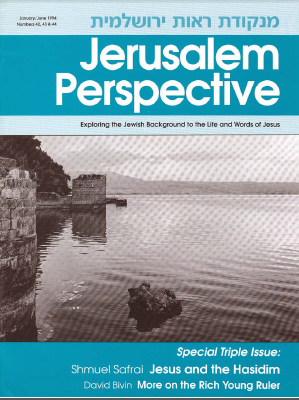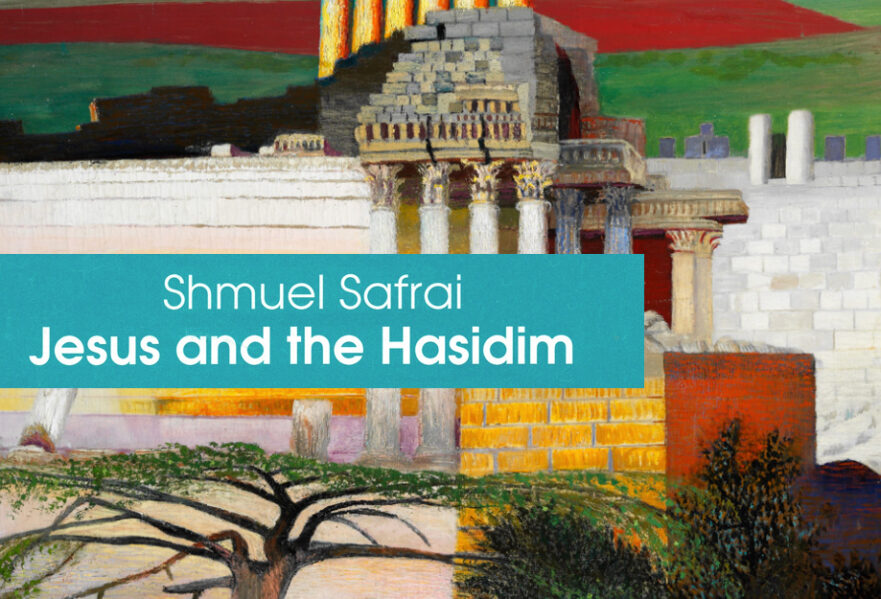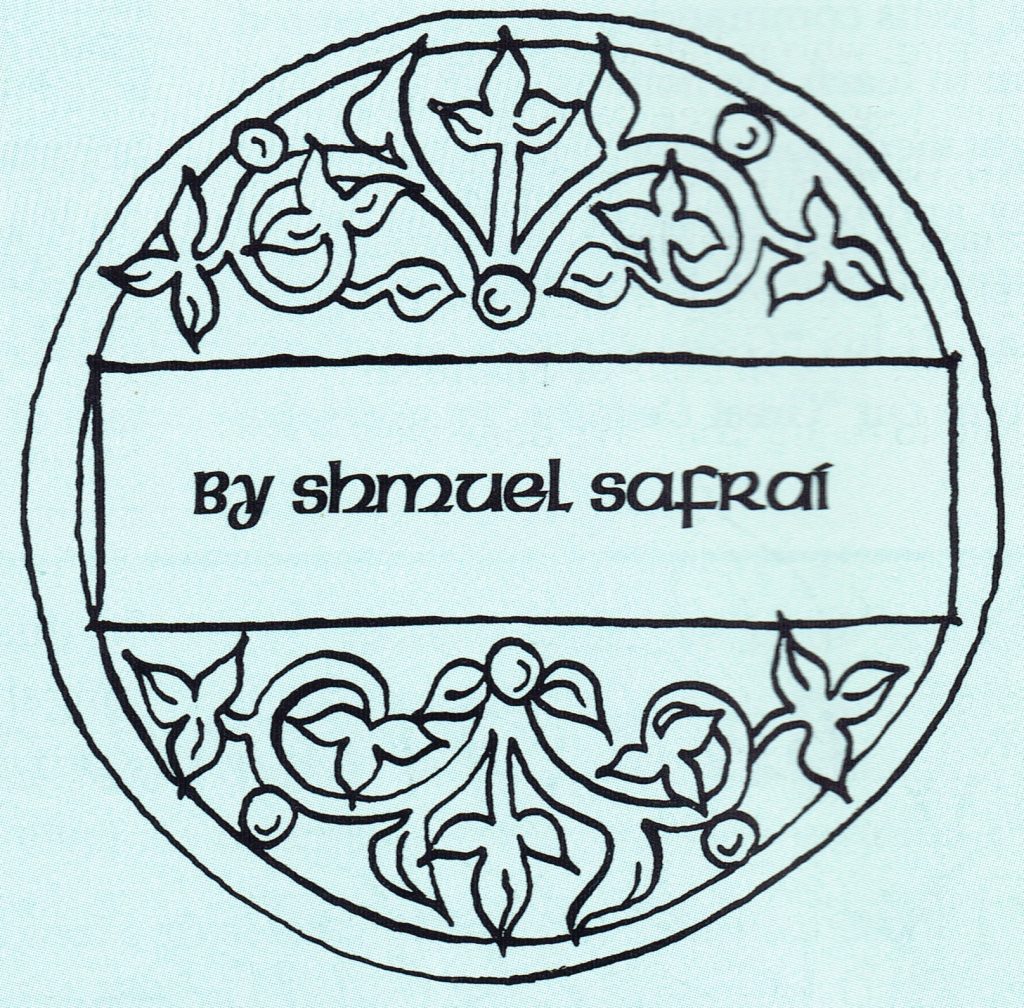How to cite this article: Shmuel Safrai, “Jesus and the Hasidim,” Jerusalem Perspective 42/43/44 (1994): 3-22 [https://www.jerusalemperspective.com/2685/].
Josephus relates that there were three schools of thought among the people of Israel: Pharisees, Sadducees and Essenes.[1] The Dead Sea sect likewise divided Israel into these three groups.[2] Rabbinic literature, however, mentions only Pharisees and Sadducees, referring obliquely at best to the existence of the Essenes.[3]
Jesus was closer to the world of the Pharisees than to that of the Sadducees or Essenes. He certainly did not share beliefs, religious outlook or social views with the Sadducees, and he would have had little in common with the isolationist views of the Essenes and their overt hostility toward anyone who did not accept their stringent views on ritual purity. Even if one accepts the premises of certain modern scholars regarding similarities between various sayings in the synoptic Gospels and the literature of the Dead Sea sect, there is an enormous distance between Jesus and the Essenes. Jesus made this clear with his statement that the “sons of this world” are superior to the “sons of light” (Luke 16:8).
Jesus and the Pharisees
Jesus’ education and understanding of Torah was in agreement with the Pharisees’ norms, based on both the Written and Oral Torah (Luke 2:41-47). He even taught his disciples and followers: “The scribes and the Pharisees sit in the seat of Moses, so be careful to observe everything they tell you” (Matt. 23:2-3). The expression “seat of Moses” is also found in midrashic literature[4] and such seats have actually been found in ancient synagogues.[5] Jesus, however, warned the people not to behave like the Pharisees, because “they say, but do not do” (Matt. 23:3).
Paid Content
Premium Members and Friends of JP must be logged in to access this content: Login
If you do not have a paid subscription, please consider registering as a Premium Member starting at $10/month (paid monthly) or only $5/month (paid annually): Register
One Time Purchase Rather Than Membership
Rather than purchasing a membership subscription, you may purchase access to this single page for $1.99 USD. To purchase access we strongly encourage users to first register for a free account with JP (Register), which will make the process of accessing your purchase much simpler. Once you have registered you may login and purchase access to this page at this link:


- [1] Josephus, War 2:119-166; Antiq. 18:11-22. ↩
- [2] See David Flusser, “Pharisees, Sadducees and Essenes in Pesher Nahum,” Alon Memorial Volume (Tel Aviv, 1970), 133-168 (Hebrew). English translation in Judaism of the Second Temple Period: Qumran and Apocalypticism (trans. Azzan Yadin; Grand Rapids: Eerdmans, 2007), 214-257—Ed. ↩
- [3] See Ze’ev Safrai, “Bene-Rechav, the Essenes and the Concept of Going to the Desert in the Teachings of the Sages,” Annual of Bar Ilan University 16/17 (1979): 37-58 (Hebrew). ↩
- [4] The expression קָתֶדְרָא דְּמֹשֶה (qā·ted·RĀ’ demo·SHEH, “the seat of Moses”) is mentioned in the teaching of Rav Aha in Pesikta de-Rav Kahana 1 (ed. Mandelbaum, 12). The first scholar to point this out was W. Bacher, “Le siege de Moise,” REJ 34 (1897): 299. ↩
- [5] E. L. Sukenik, “Kathedra De Moshe in Ancient Synagogues,” Tarbiz 1 (1930): 145-151 (Hebrew). See the comments of J. N. Epstein ad loc., 152. ↩



![Shmuel Safrai [1919-2003]](https://www.jerusalemperspective.com/wp-content/uploads/userphoto/20.jpg)





























































































Comments 2
God bless Jerusalem Perspective and its’ wonderful authors! Safrai, Flusser and Bivin et al have opened the eyes of the world to the Jewishness of Yeshua. Christendom has long turned a blind eye to the culture and teachings of the sages of which Yeshua was connected. We can no more separate Yeshua from Yisrael than we can separate the New Testament from the Tanakh (Old Testament) or the Torah from the Spirit.
This article has challenged my faith immensely. Western Christianity forgets the counsel of Chalcedon’s creed “fully God fully man.” I cannot identify with Christs divinity but his humanity rooted in the Hasidim pressures my life as an opportunity for him I should rise to meet in ‘Piety’. This article also puts to rest where Jesus fits into Judaism. Most Christians divorce him from Pharisaic Judaism because of anti Semitic statements that have found their way into the Gospels. Rather than attempting to place Jesus in his practice of faith he is depicted as beginning a new religion all together, Christianity. Jesus was a Jew! This article shows he was a Jew in the order of the Hasidim. So grateful for the pillars of Safrai and Flusser. Their influence is missed. Though they have “died, …through his faith he still speaks.” Hebrews 11:4
“The question is not whether Jesus was a Jew or not: rather, the question is what kind of a Jew he was.” The late David Flusser while teaching from his Home in Israel before his death.